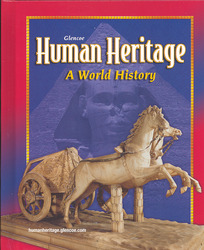
Human Heritage: A World HistoryChapter 21: The Byzantine EmpireThe Byzantine EmpireEmperor Constantine I moved the capital of the Roman Empire from Rome to Constantinople around A.D. 330. About 100 years later, the Roman Empire in the West fell. The Roman Empire in the East, however, survived and prospered. It became known as the Byzantine Empire. Chapter 21 focuses on the Byzantine Empire. Section 1 explores the capital city of Constantinople, why it was important to the Empire, and how it contributed to the Byzantine Empire's survival and prosperity for 1,000 years. Section 2 covers the Byzantine Empire under the rule of Justinian I and his wife Theodora. The section details Justinian's achievements, including the development of the Justinian Code, the building of Hagia Sophia (which still stands today), and the expansion of the Empire's boundaries. Section 3 explores the important role that the Eastern Orthodox Church played in the Byzantine Empire. The section explains how the argument over icons, the Patriarch's refusal to recognize the Pope as head of the Church, and the Pope's crowning of Charlemagne as Emperor of the Romans contributed to the split between the Eastern Orthodox and the Roman Catholic churches. Section 4 explains the internal problems and outside forces that weakened the Byzantine Empire and led to its downfall. |  |















